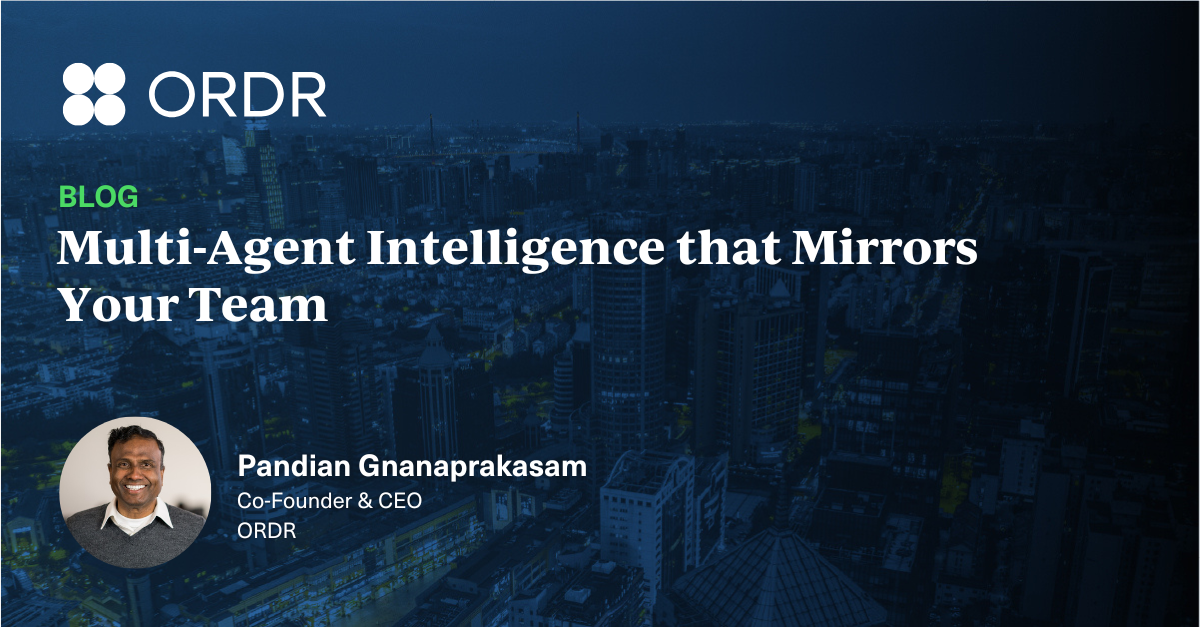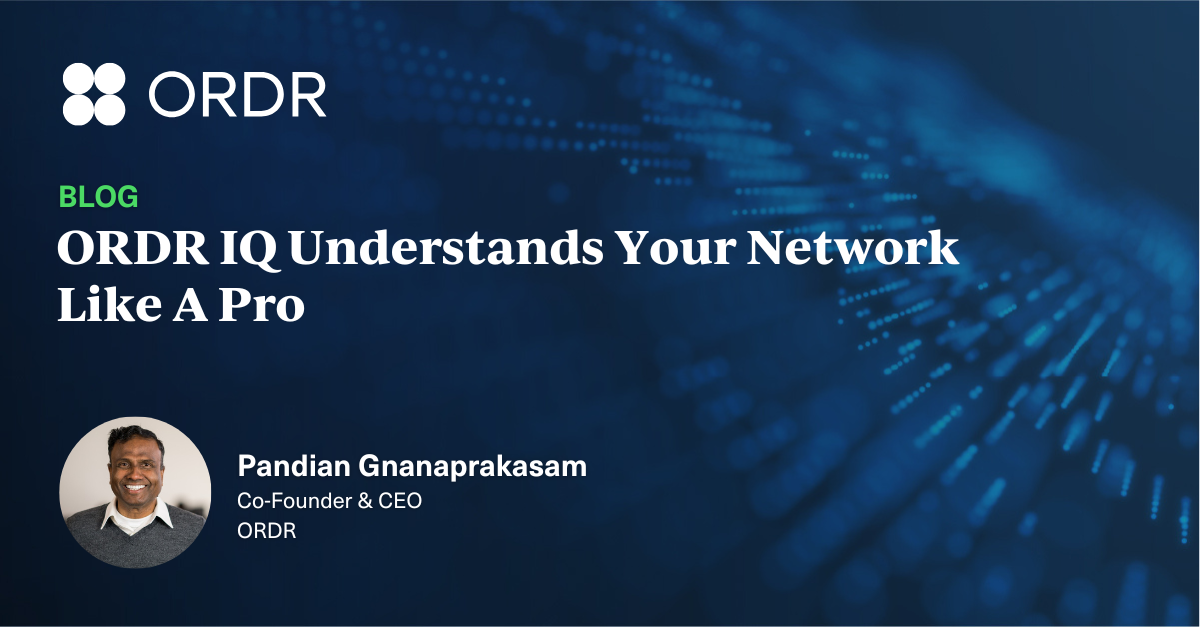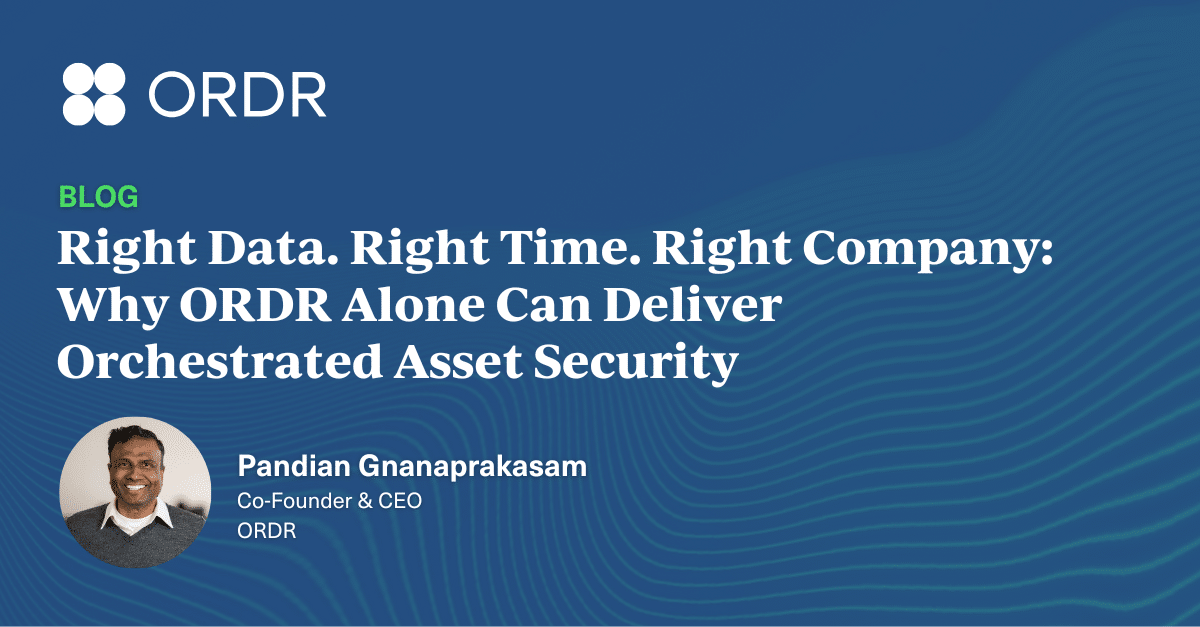AI has reached a defining moment in IT operations and cybersecurity. Every company is racing to integrate language models and assistants into their products. But while most are focused on information retrieval, ORDR is focused on intelligent action. ORDR IQ is more than conversational AI — it’s a multi-agent orchestration engine that can triage, analyze, recommend, and enforce policies across an organization’s entire environment, safely and at scale. This is the technology behind orchestrated asset management and security — where verified data, reasoning, and automation converge into one intelligent system.
Why Architecture Matters
IT and Security operations have always relied on tools designed for human scale, dashboards, alerts, manual investigations, and scripted workflows. But human-scale workflows can’t keep up with AI-scale threats. The answer isn’t another dashboard or chatbot. It’s an architecture built for autonomous coordination. ORDR IQ achieves this through a multi-agent AI design built on the ORDR MCP server, powered by our deterministic asset intelligence graph.
Multi-Agent Orchestration
At the heart of ORDR IQ is a collection of purpose-built agents — each designed for a specific operational function. These agents communicate, cooperate, and coordinate to complete complex IT and security workflows that once required multiple teams and tools.
- Classification Agent — identifies and categorizes every device IT, OT, BMS, IoT, or clinical, at enterprise scale.
- Traffic Analytics Agent — monitors real-time network flows, detecting anomalies and external communications.
- Vulnerability Agent — correlates CVEs, FDA recalls, and exploit likelihood against live device inventories.
- Segmentation Agent — translates intent (“Isolate high-risk IoT devices”) into enforceable zero trust rules.
- Deployment Agent — applies to ACLs, firewall rules, and SGACLs across more than 3,000 supported infrastructure types.
- Compliance Agent — generates audit-ready reports with control coverage and exception summaries.
Large Context Reasoning
IT Operations and Cybersecurity data are inherently high-dimensional, millions of devices, billions of connections, and endless change. Where typical AI models lose precision as context expands, ORDR IQ maintains accuracy through large-context reasoning. Each query or task leverages the ORDR Asset Intelligence Graph, a pre-computed, continuously updated structure that connects device identity, flow data, vulnerability context, business impact, and segmentation intent.
That means ORDR IQ can process questions like:
“Which devices in the ICU are affected by this new CVE?”
“Show all unmanaged assets communicating with external IPs.”
“Generate segmentation policies for all infusion pumps in VLAN 50.”
… and deliver results in seconds, not hours with the full operational context included.
MCP Protocol: Real-Time Interaction with Security Stack
The Model Context Protocol (MCP) is the connective tissue of ORDR IQ. It allows large language models (Claude, OpenAI, Gemini, and others) to interact directly with ORDR’s verified data and enforcement of APIs without exposing sensitive information or violating governance boundaries. Through MCP, ORDR IQ can query live data from CMDBs, vulnerability management systems, and SIEM/XDR platforms; execute network-level actions securely through the ORDR platform; and validate and audit every request through enterprise authentication frameworks.
Grounded Domain Prompting and Deterministic Reasoning
Most AI systems are statistical. They predict likely answers. ORDR IQ is deterministic. It retrieves truthful answers. We achieve this with Grounded Domain Prompting: a specialized approach that constrains model behavior to validate security data and query templates. Every question, from vulnerability checks to segmentation requests, is translated into structured operations executed against the ORDR asset graph. The result is hallucination-free output — AI that doesn’t just sound confident but is correct.
Reusable Skill and Pre-Built Code Libraries
ORDR IQ includes a growing library of code-backed skills, executable functions callable by agents to perform live actions.
Examples include:
device.classify_by_signature()
flows.query_by_context()
risk.calculate_composite()
policy.generate_zero_trust()
acl.build_and_push()
Enterprise Controls and Privacy by Design
IT operations and security automation must be accountable. That’s why every ORDR IQ interaction is governed by enterprise-grade controls: Role-based permissions and OAuth 2.1 with PKCE for authentication, granular RBAC for action-level authorization, network isolation and TLS 1.3 encryption, and a zero-day retention policy. No data is stored or used for model training. The entire system operates within the customer’s governance framework, giving organizations the power of AI without surrendering control.
The Result: AI That Acts at the Speed of Security
ORDR IQ doesn’t replace people; it amplifies them. It coordinates what once required multiple teams and weeks of manual work into orchestrated workflows that are executed in seconds. This is what true orchestrated asset security looks like: AI that thinks like a team of specialists, data that’s always verified and current, and actions that are explainable, enforceable, and secure. While others build chatbots to summarize, ORDR builds AI that manages and protects. Because the future of IT operations and cybersecurity won’t be written in dashboards, it’ll be orchestrated in real time.

Interested in
Learning More?
Subscribe today to stay informed and get
regular updates from ORDR Cloud


